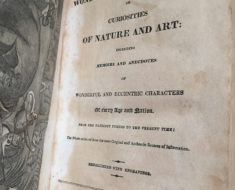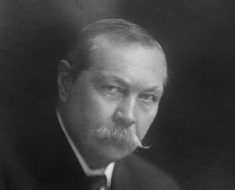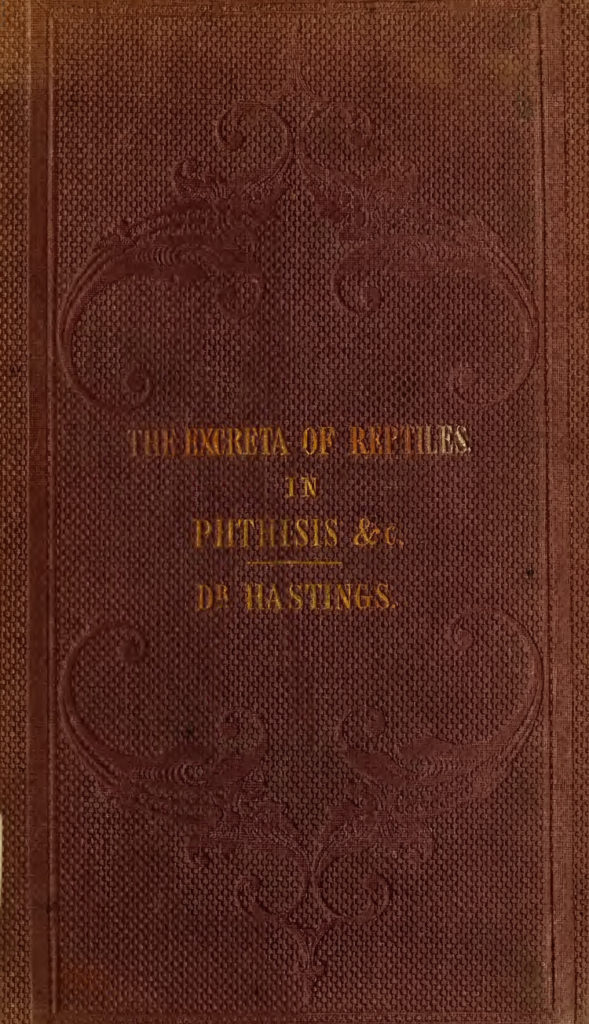
Hastings’ 1862 book about the excreta of reptiles.
In 1862, Dr. John Hastings published a book called An Inquiry into the Medicinal Value of the Excreta of Reptiles. His findings, as you may have guessed, showed that reptile poop was a wondrous substance with powerful abilities to cure many ailments. I came across this bizarre tale in Thomas Morris’ 2018 book, The Mystery of the Exploding Teeth and Other Curiosities from the History of Medicine. His short chapter on lizard dung led me to Hastings’ inquiry.
The curious and experimental doctor believed that all diseases of humankind could be treated with that which God has provided. And while plants and herbs had been well explored by medical men, he thought animal excrement remained wide open territory. And so his studies began.
“It would be foreign to my purpose to detail here the various animals I put in requisition in the course of this investigation, or the animal products I examined during a prolonged inquiry,” Hastings wrote. “It is enough to state that I found in the excreta of reptiles agents of great medicinal value in numerous diseases where much help was needed.”
Here are four of them:
- Coughing: A 28-year-old musician suffering from a cough, night sweats, loss of appetite, constipation and then diarrhea was apparently cured with a prescription of “the 200th part of a grain of the excreta of the monitor niloticus (warning lizard of the Nile) in a tablespoonful of water, to be taken three times a day, and directed an external application of the same solution to the diseased side.” After a week, the patient appeared to be better.
- Asthma: A 12-year-old daughter of a clergyman suffering from asthma year-round was brought from her countryside home to London for treatment. “I afforded her immediate relief by sponging her windpipe with a weak solution of iodine, at first on every other day, and subsequently less frequently for a period of six weeks, and I also directed a lotion of the excreta of the chameleon vulgaris (common chameleon), of the strength of the 200th part of a grain to half-an-ounce of water, to be rubbed over the throat and chest three times a day.” After a few weeks of this treatment her asthma appeared to have gone away. “I have heard twice from this young lady’s mother since my attendance, and she stated, on both occasions, that her daughter had met with no return of the disease,” Hastings wrote.
-
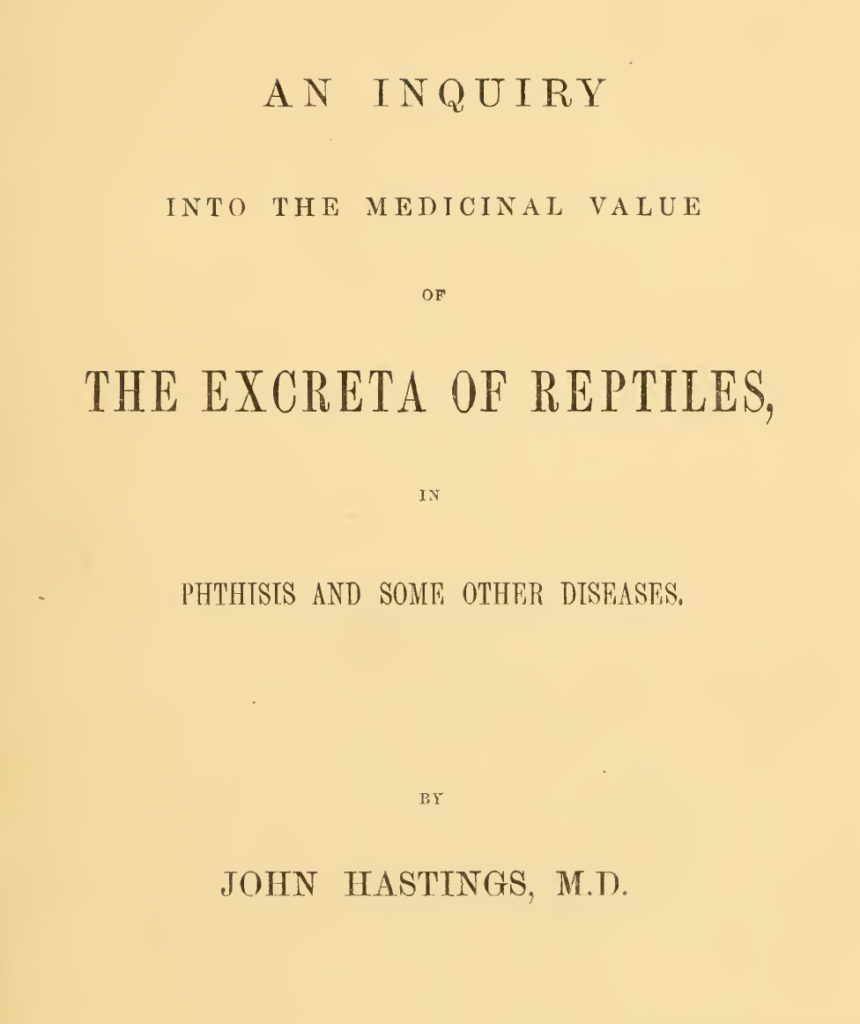
Title page to Dr. John Hastings’ 1862 book about reptile poop.
Profuse Menstruation: A 26-year-old woman suffering from “excessive and frequent menstrual discharge,” along with back pains and “severe hysterical attacks” consulted Dr. Hastings and received “the 200th part of a grain of the excreta of the chameleon vulgaris (common chameleon) in a dessert-spoonful of water three times a day. After two weeks she felt better and later informed the doctor that her last menstrual period saw a “very marked change for the better.” Was that spoon ever used for dessert again?
- Acne: A 23-year-old man with bad pimples got no help from other doctors, but found great relief in Dr. Hastings chameleon poop. Like the aforementioned woman with the bad periods, this fellow found success with an excrement-laced “dessert-spoonful of water three times a day.” His face began to clear up, as “the pimples were smaller and more depressed.” Hastings recommended the man continue the treatment.
Morris makes it clear in his book that Hastings’ peers found his treatments to be a farce. The British Medical Journal suggested that a 200th grain of “cheese-parings” would have “obtained equally satisfactory results.”
And while Hastings may have been the first to recommend reptile poop for medicinal uses, animal poop had been used to treat patients a hundred years earlier, as evidenced in the 1747 book, Pharmacopoeia Universalis: or, A New Universal English Dispensatory, by R. James, MD. Read about seven such remedies here.

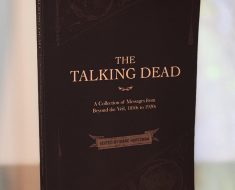

![Premature Burial [Public domain], via Wikimedia Commons-Illustration for Edgar Allan Poe's story The Premature Burial by Harry Clarke (1889-1931), published in 1919.](https://www.weirdhistorian.com/wp-content/uploads/2017/09/premature-burial-crop-235x190.jpg)
